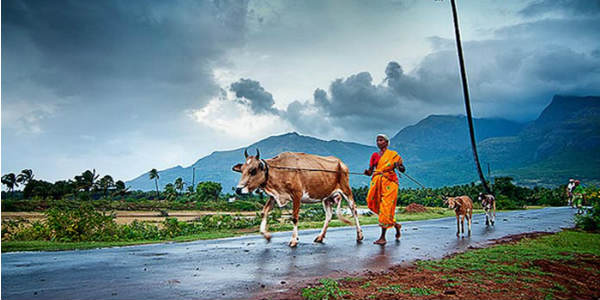NEW DELHI: For decades, the evolution of the Indian monsoon has not been entirely understood. Nor have scientists decoded how it intensified and how it has varied with time, leaving gaps in how they understand a recurring climate phenomena on such a large scale. By analysing sediment from the Bay of Bengal, researchers have found that the present Indian monsoon system, as we have it now, goes back at least 27 million years.
“Previous studies only went as far back as 12 million years. They used wind and vegetation data, but that would not paint a clear picture of Monsoon intensity,” corresponding author Sajid Ali from the Birbal Sahni Institute of Palaeontology in Lucknow told TOI.
“We analysed sediment from the Bay of Bengal. Change in sediment is directly linked to change in monsoon … The presence of minerals depends on the intensity of monsoon. Different minerals are formed when the monsoon is strong and others when it is weak.”
For the study, to be published in Wiley journal ‘Paleoceanography and Paleoclimatology’, they collected 38 sediment samples of Bay of Bengal under Japan’s International Ocean Discovery Program, which were then analysed in Germany.
Then, they studied the nano fossils (plankton which are one thousand millionth of a metre) from the bottom of the sediment deposits.
“Those were found to be 27 million years old, the age we conclude for the present Indian Monsoon system,” Ali explained.
To understand how stable monsoon was
— that is, the fluctuation patterns of precipitation — they conducted radiogenic isotope analysis (in which radioactive decay gives an indication of time or duration of a geological event) and then tested for the presence of clay minerals.
The clay was found to have originated from the Himalayas and the Indo-Burman range.
“And we found the presence of four clay minerals — illite, chlorite, smectite and kaolinite — was more than 60% in some samples. This is tied to increased weathering (wearing down) of rocks. That was around 13.9 million years ago,” Ali said. More physical weathering means more precipitation.
“In other samples, the presence of clay minerals was less than 40%. That was about 9 million years ago.”
Points like these on the geologic time scale are important markers of monsoon variability.
“A pronounced increase in physical erosion coincident with global cooling about 14 million years ago points to a shift in the weathering regime,” the supplementary information to the paper said.
Ali said that is what they will work on next: “With high-resolution studies around these points, like 13.9 million years ago or 9 million years ago, we can explain monsoon variability better and compare it with global climate systems.”
Source: ToI
You may also like
-
New Heat-Based Approach To Cancer Treatment Can Reduce Chemotherapy Doses
-
Scientists Take A Major Step Towards Unification Of Classical & Quantum Gravity
-
India Graphene Engineering and Innovation Centre (IGEIC) Under the Vision of Viksit Bharat@2047 Launched
-
New High-Performance Gas Sensor can Monitor Low Level Nitrogen Oxides Pollution
-
Antidepressant Drug can be Repurposed for Treating Breast Cancer
